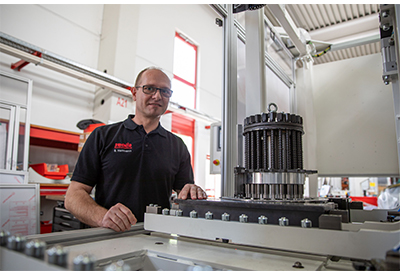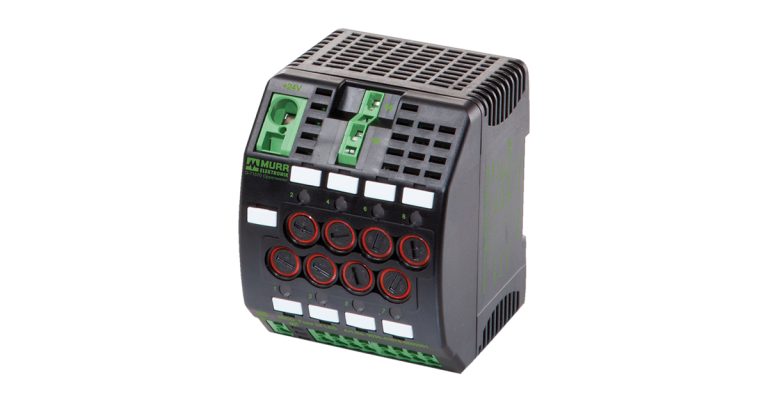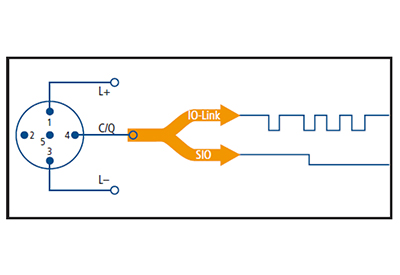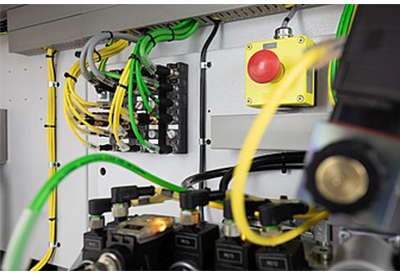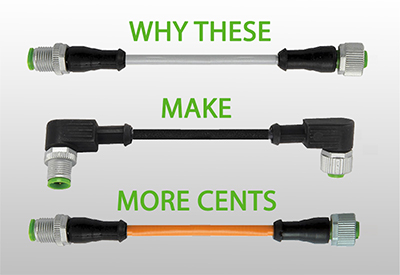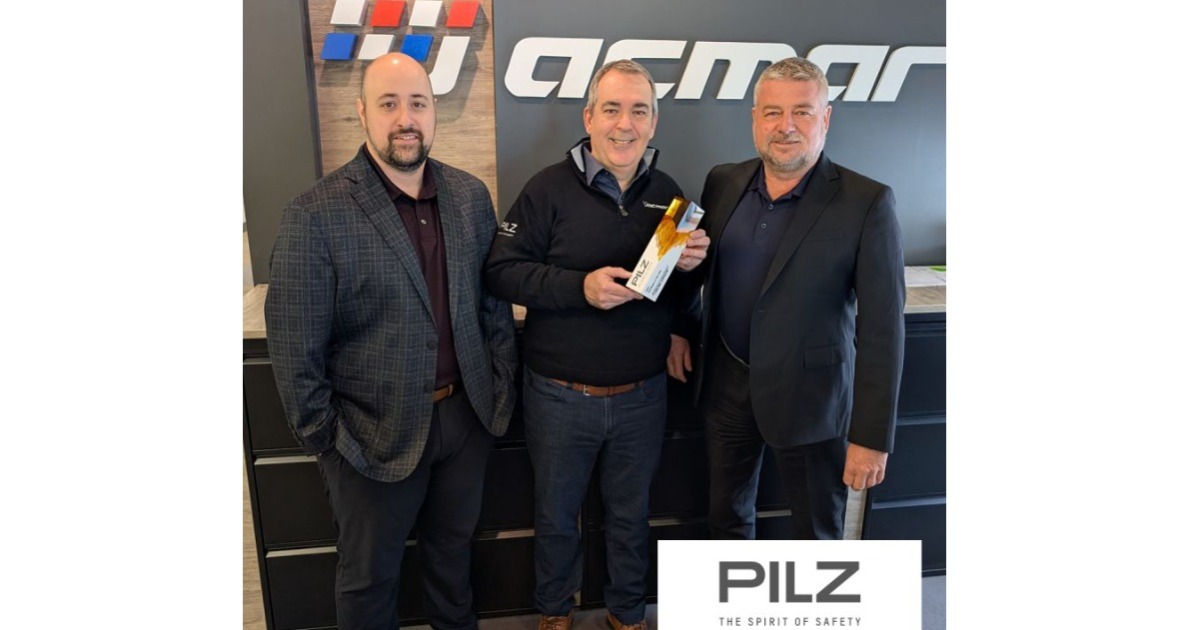How To Zone Output Power When Using IO-Link
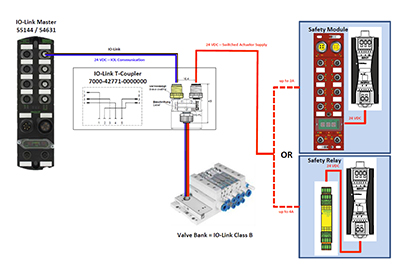
March 8, 2022
By Colin Cartwright, System Sales Manager, Murrelektronik Canada
One of the requests we often run into here at Murrelektronik is how to zone or separately control the output power of a valve bank using IO-Link. This type of power separation is usually needed when a valve bank is required to be controlled by the outputs of a safety relay or safety controller.
For example, a valve bank with an IO-Link Class B interface usually requires more power than can be provided by Pins 1 (24V) and 3 (0V) of the IO-Link master port, so additional power is supplied via Pin 2 (24V) and Pin 5 (0V).
Here is what that looks like when using an M12 connector:
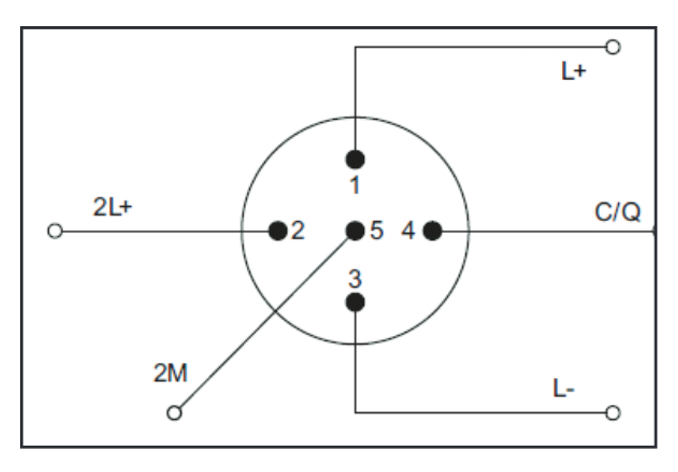
The IO-Link valve bank interface will then use the additional 24V supplied via pins 2 and 5 to energize the valve solenoids independently from the standard IO-Link power (pins 1 and 3). Most IO-Link Class B devices provide this type of power separation, but it can get a little messy trying to wire up two separate power sources to an M12 field connector.
As this type of application is becoming more common, Murrelektronik designed a special T-coupler that makes it very easy to connect separate power sources to an IO-Link Class B device. Here is a diagram showing our IO-Link T-coupler (Part # 7000-42771-0000000) used to connect standard IO-Link power and actuator power supplied by a safety module or safety relay without using a field connector. The standard IO-Link power and communication are connected to the left side of the T-coupler, and the safety-controlled outputs are connected to the right side of the T-coupler.
Here is a closer look at the T-coupler pinouts
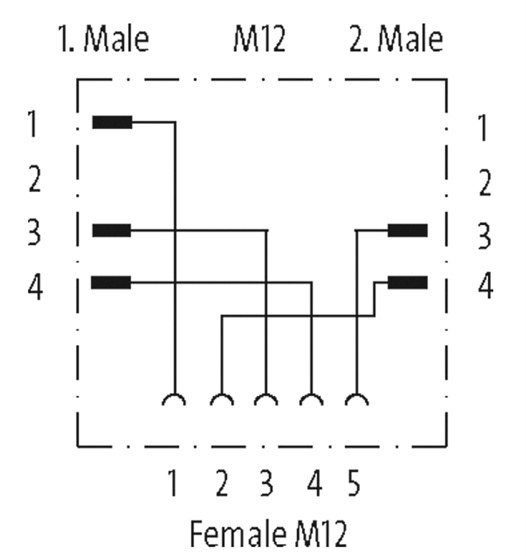
The IO-Link T-coupler can also be used to connect an IO-Link Class B hub with galvanically separated ports to switch individual outputs or standalone valves.
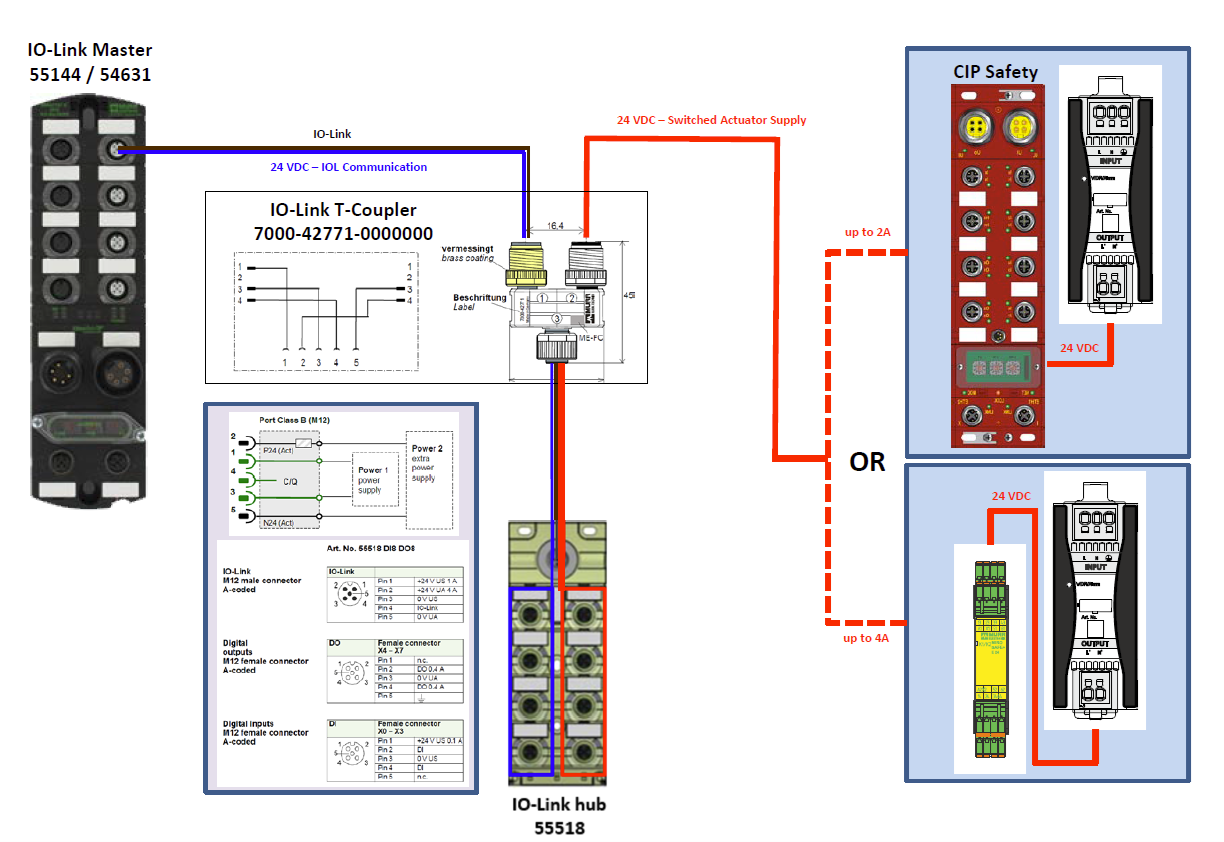
In this example, the output power of the four ports on the right side of the IO-Link hub (red) is independently controlled by the safety module/relay outputs. The input ports on the left side (blue) are galvanically separated so they can remain powered when the safety outputs are turned off.
If you would like to learn more about the IO-Link T-coupler and other IO-Link solutions offered by Murrelektronik, get in touch with your local Murrelektronik representative.

